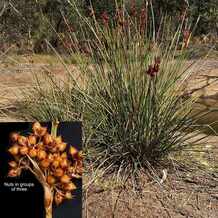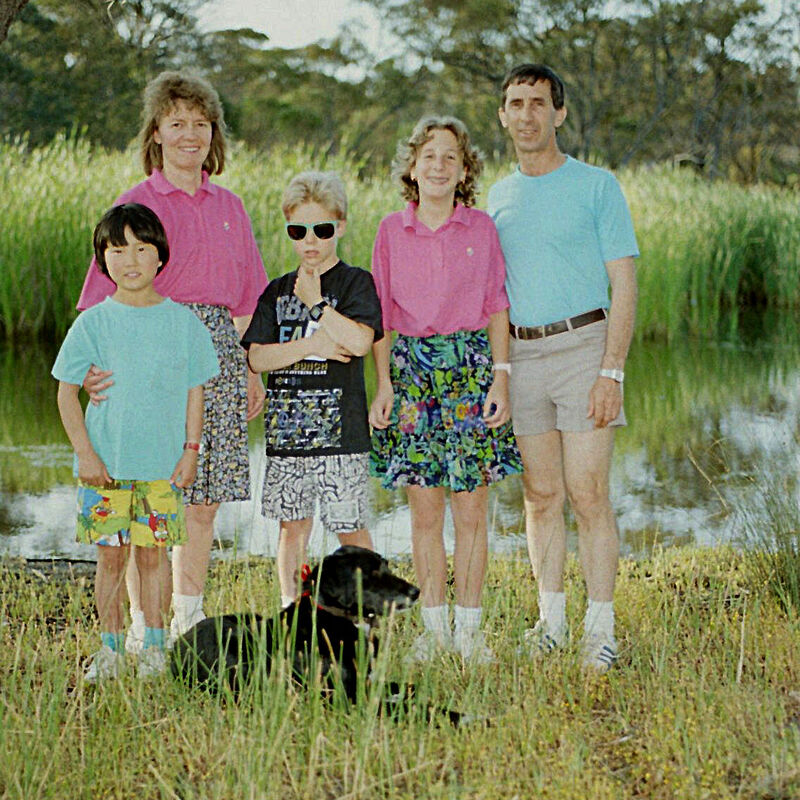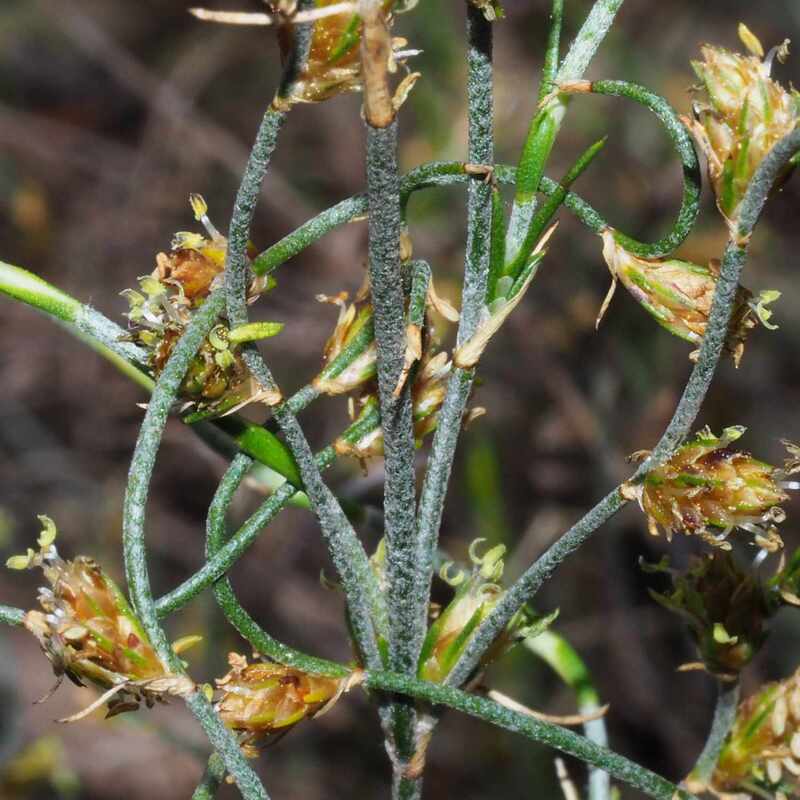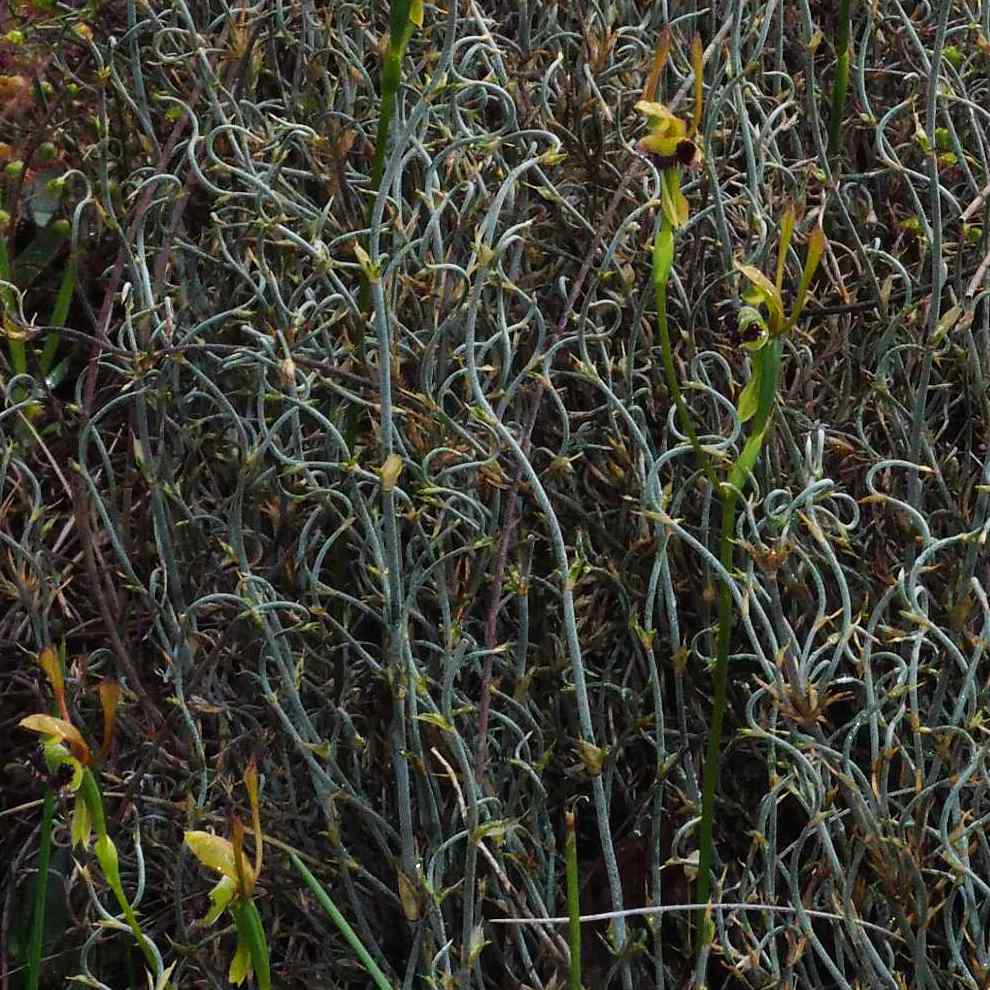 Phragmites australis flowering at Gnarojin Park
Phragmites australis flowering at Gnarojin Park A commonly used rhyme to distinguish between grasses, sedges, and rushes is.
“Sedges (Cyperaceae) have edges, rushes (Juncaceae) are round, grasses (Poaceae) have knee joints all the way to the ground”.
This rhyme is not useful in WA.
Does it matter if you can't tell the difference? Occasionally yes when weeds are involved. A recent example was a decision to replace Bull Rushes in Narrogin Creek with Common Reed Phragmites Australis, which is an introduced weed. Phragmites is certainly impressive and probably isn’t a problem there apart from blocking the creek, but it kills adjoining plants and is an aggressive weed in coastal wetlands.
 A narrow-leaved sedge
A narrow-leaved sedge Grasses (Poaceae), sedges (Cyperaceae), rushes (Juncaceae) and southern rushes (Anarthriaceae and Restionaceae) are all wind pollinated monocotyledons, which grow as annuals or clumping perennials. Perennial plants spread by horizontal underground roots called rhizomes.
There are lots of native and introduced grasses around, which can be easily identified by their hollow stems and stem joints called nodes.
 Tasting result = blah
Tasting result = blah  Juncus acutus Railway Dam
Juncus acutus Railway Dam Spiny Rush Juncus acutus is an introduced spiny weed, which infests our damp waterways and dams. Despite this it is useful for reducing erosion in wet salty areas, and as wildlife habitat.
Restionaceae are funky mat-like plants with round green to grey-green stems (culms),and brownish scale leaves, which often occur in patches in open kwongan or woodland. Being very tough plants which can withstand short-term waterlogging then drought, they are often found on open gravel, sand,or sand over clay.
Lepidobolus species have curly snake-like culms

















